Musti and I have been walking in Mt. Hope Cemetery nearly every weekday morning since early 2005 (joined by Luc in September of 2009), walking in roughly the same areas each day, so it wouldn’t be a terrible exaggeration to claim that I’ve seen this odd gravestone more than 2000 times.
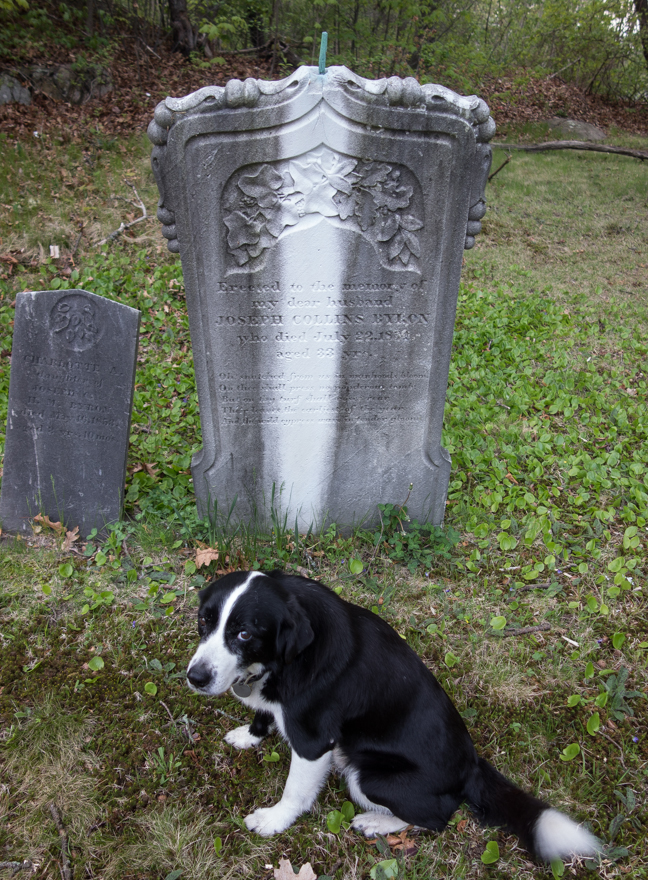
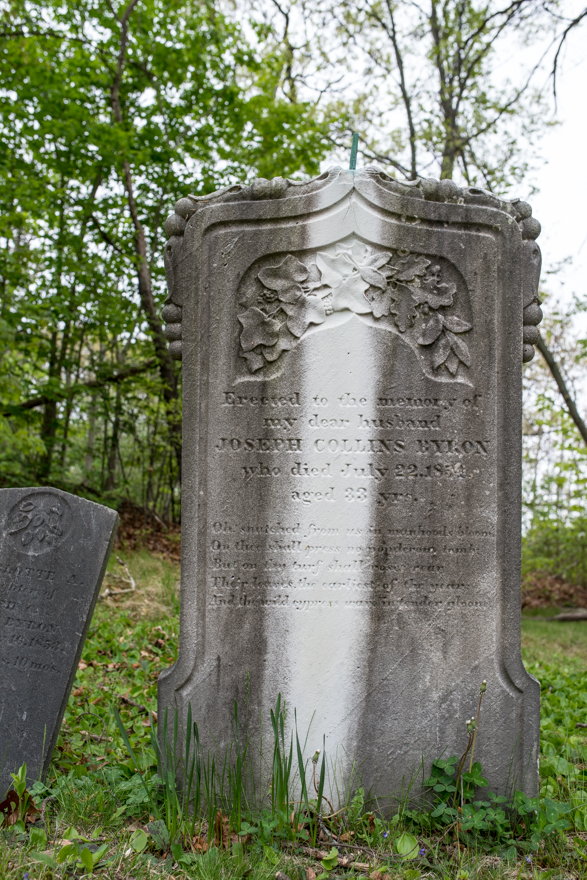
The odd streak of clean white marble caught my eye from the beginning; I also noticed that there was a weathered copper spike, covered in green copper sulfate, coming out of the top of the monument (probably an attachment for a long-lost decorative sculpture).
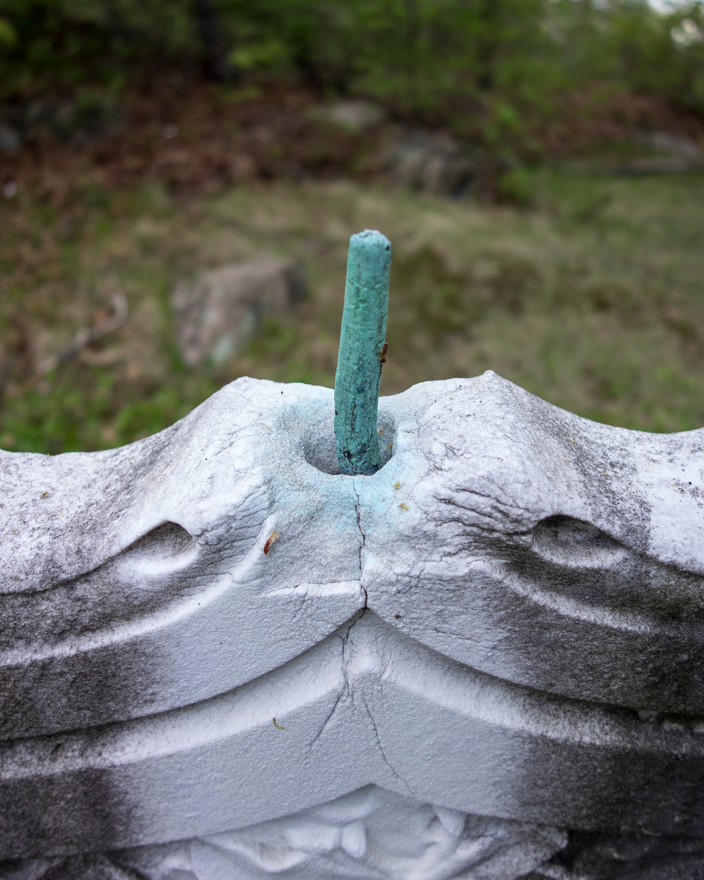
But I wasn’t able to put together a convincing story to explain the unusual appearance. I was assuming that the rest of the marble was darkened due to air pollution and soot, and I couldn’t invent a mechanism whereby copper sulfate, leached by rainwater, could react with carbon in the soot to leave the marble clean and white. And so this low-level puzzlement has accompanied me on my morning walks, eliciting an occasional furrowed brow.
Earlier this week, for some reason, I decided to take another look at the stone, and this time the story became clear. I noticed some lichen growing on the face of the marble, and I suddenly realized that the black stuff was not soot but microbial growth. My embarrassment at having missed something so obvious was balanced by my relief at having found an explanation.
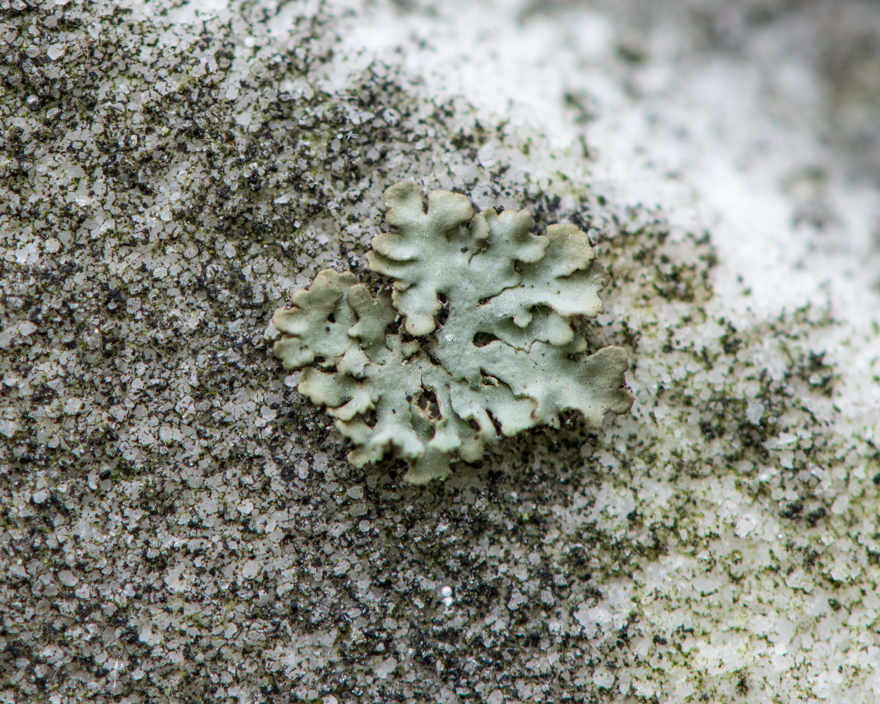
With a little magnification, the coarsened texture of the marble’s surface became more apparent*, and the nondescriptly dark areas started to look like little colonies — algae? fungus? more lichen?
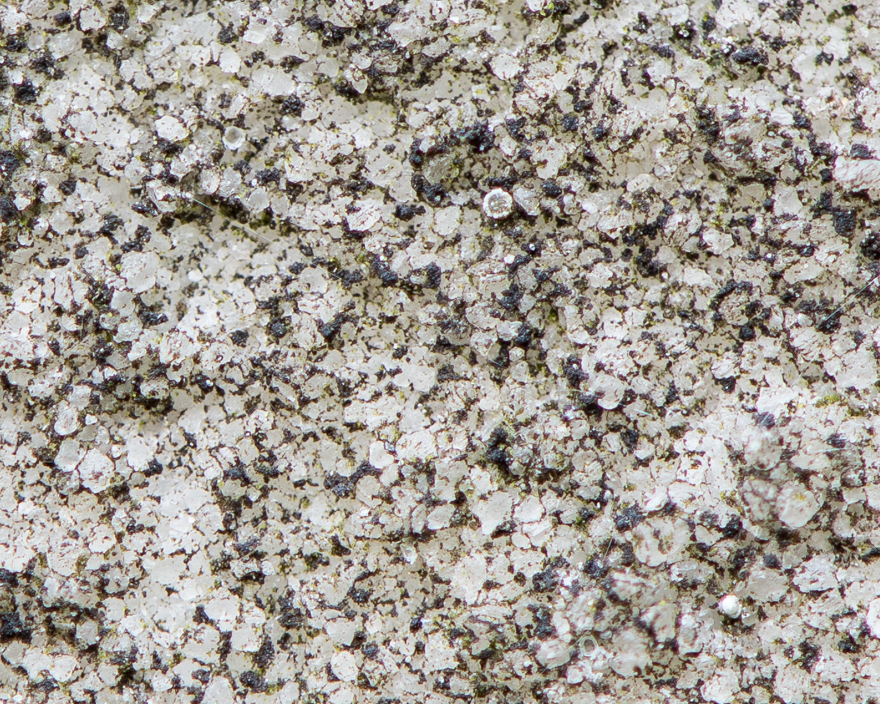
Copper ions, like those in the copper sulfate leaching from the spike, are well known for their ability to kill algae and fungi, and by extension, lichens, which are symbionts made up of an alga and a fungus. The spike was creating a sterile zone where nothing could grow on the marble.
Now that my first mystery was solved, a new one replaced it: What was growing on the gravestone? The macroscopic lichen looks an awful lot like Green Shield (Flavoparmelia caperata), a common pollution-tolerant species that usually grows on tree bark. I’m a lichen novice, though, so I don’t have a good handle on how to confirm the ID; I’m reaching out to those more knowledgeable in these matters and will report back. But in addition to the putative Green Shield, it looks like there’s a moderately diverse ecosystem on the surface of this gravestone, awaiting exploration. Who needs to go to Panama!
___________________
*According to Meierding (Annals of the Association of American Geographers Vol. 83, No. 4 (Dec., 1993), pp. 568-588), the air pollutant SO2 is the most important cause of weathering in gravestones in the northeast US. The SO2 converts CaO and CaCO3 in the marble into gypsum crystals (CaSO4.2H2O), which physically fractures the face of the marble.
Tagged: copper, Flavoparmelia caperata, gravestone, Green Shield, lichen, marble, Mt. Hope Cemetery, Musti